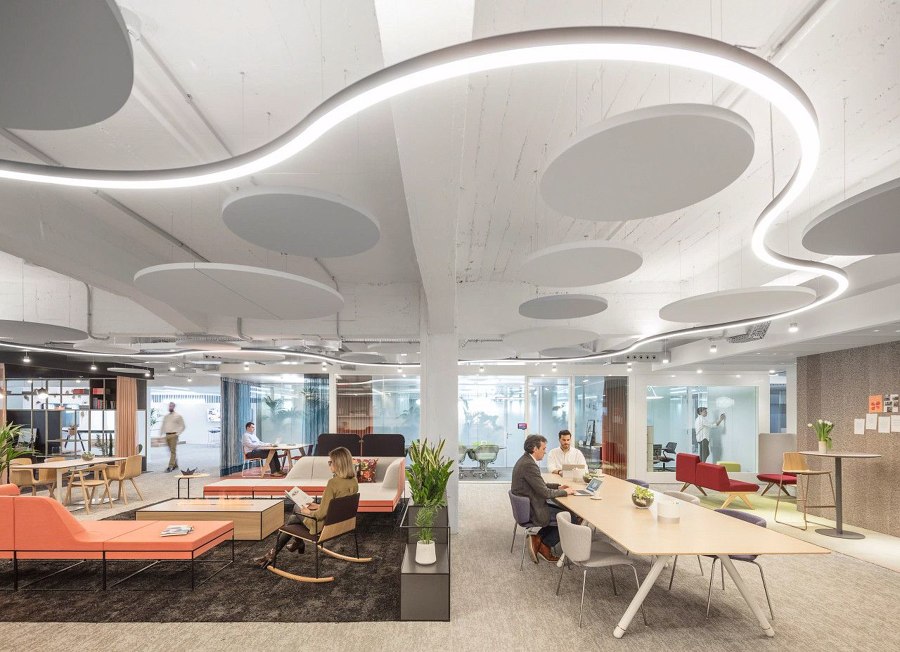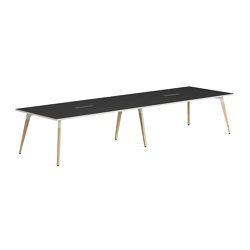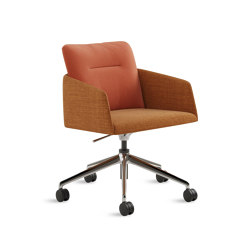A neighbourhood feel for the office
Historia de la marca de Nick Compton
Munich, Alemania
30.06.22
By looking to urban planning for design inspiration, Steelcase has created a new roadmap and key principles for designing workspaces that make employees feel 'rooted and replenished.'
Steelcase's new set of design principles enables organisations to create a better work experience, delivering on what people need now and in the future

Steelcase's new set of design principles enables organisations to create a better work experience, delivering on what people need now and in the future
×Many predicted that COVID-19 would leave us with a collective agoraphobia, a lingering jitters about being in crowded public spaces or places. Anyone who has recently been to a restaurant, bar, theatre or airport (especially an airport!) will have realised the opposite may be true, we are desperate to hurl ourselves back into the human hurly burly.
There is one area of life that seems to be an exception. The return to the office, even for the two or three days a week that hybrid arrangements now allow, has been slow and grudging. As international work environment expert Steelcase points out, most employers and employees have enthusiastically embraced hybrid working, as a concept. Over 70% of global leaders, Steelcase says, are giving people the option to work at home or otherwise out of the office two or three days a week. It’s the reality of office life that’s the problem.
Social Spaces like the above are an intentional and flexible mix of shared and individual experiences that foster a sense of community and belonging

Social Spaces like the above are an intentional and flexible mix of shared and individual experiences that foster a sense of community and belonging
×For Steelcase, the reason for this reluctant return is simple - employers haven't rethought or reimagined their workspaces in line with the new realities. Time in the office is no longer a matter of routine and requirement, it is a matter of purpose and intent. The office is now where workers can meet and collaborate, plug into a collective energy and sense of purpose and find support. But while they are there they might also need somewhere private for video conferencing or head-down deep work.
Flexible team and private settings and mobile tools support in-person and distributed teams of all sizes

Flexible team and private settings and mobile tools support in-person and distributed teams of all sizes
×The hybrid workspace has to tick a lot of boxes and tick them emphatically if brands are going to attract and retain the best workers. And Steelcase argues that the vibrant, diverse neighbourhood – their parks, pavements, libraries, stores and cafes – are a useful model for these new workspaces.
The new office should work like a neighbourhood, creating the same kind of energy, enthusiasm, and connections. It should be a series of interconnected spaces, public and private, gathering places and places of peace and retreat.
In designing hybrid workplaces, Steelcase creates neighbourhoods that draw people in to focus, collaborate, socialise and learn

In designing hybrid workplaces, Steelcase creates neighbourhoods that draw people in to focus, collaborate, socialise and learn
×For Steelcase, this means that employers, and workspace designers, need a new set of priorities and design goals. They need to focus on: equity, creating an inclusive experience for everyone in the office but also limiting the gap between remote workers; they need to engage workers in collaboration but also solo 'deep work'; and they need to create ease, to design spaces that feel intuitive and logical to navigate.
Steelcase also outlines 4 key design principles for creating these kinds of spaces: 'Me + We', ensuring that the work neighbourhood supports individual and team work and a painless toggle between the two; 'Fixed-to-Fluid', creating spaces that are modular and flexible, that have an organic capacity to cope with changing needs and numbers; 'Open + Enclosed', recognising the need for audio and visual privacy; and 'Braiding Digital + Physical', recognising that just as cities are getting smarter, layered with ever more complex and powerful technologies, so the workplace as neighbourhood needs to integrate technology in the most intuitive way possible.
Products that can be employed in different areas help satisfy new expectations for the workplace – and make it easier for companies to adapt to evolving and fluid work patterns

Products that can be employed in different areas help satisfy new expectations for the workplace – and make it easier for companies to adapt to evolving and fluid work patterns
×For many of us, where we work, when we work and how we work has become complex and fluid. The new office should be a place where we feel rooted and replenished. As the author, organisational psychologist, and presenter of the ‘Work Life’ podcast Adam Grant says: ‘A better vision for a workplace is a community – a place where people bond around shared values, feel valued as human beings, and have a voice in decisions that affect them.’ People feel part of and enriched by a great neighbourhood. Creating those kinds of connections should be the ambition of the best workspaces.
© Architonic















